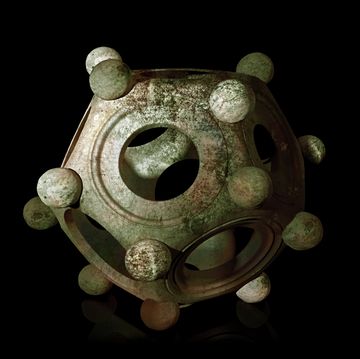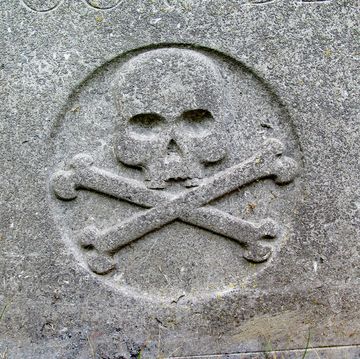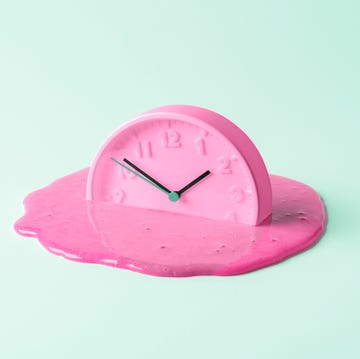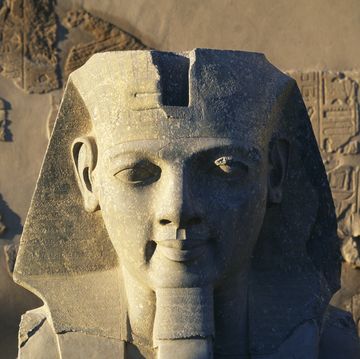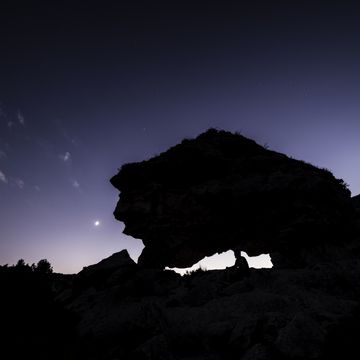- Analyzing a minuscule speck of paint from Leonardo da Vinci’s Mona Lisa, a team of scientists discovered new clues to his paint mixture.
- The oil-paint mixture features plumbonacrite, a rare compound that likely indicates the presence of lead oxide powder.
- The addition of this powder allowed for a thicker oil-based paint that could dry quickly.
We know Leonardo da Vinci as a famed Italian painter, but what about da Vinci as a chemist? New research into the Mona Lisa shows that da Vinci may very well have crafted a new type of paint mixture that then endured as the norm for centuries.
By analyzing a minuscule spec of paint culled from the top right corner of the painting, a team of researchers were able to reveal the chemical makeup of the substance. In the resulting paper, published in the Journal of the American Chemical Society, the team describes a “singular mixture of strongly saponified oil with high lead content and a cerussite-depleted lead white pigment.”
Get the latest scientific discoveries delivered straight to your inbox.
Sign up for our free newsletter and receive a daily digest of the most exciting science news stories in the world. Subscribe for free.
The real eye-catcher, though, was the presence of plumbonacrite—a rare compound stable found only in an alkaline environment. “Leonardo probably endeavored to prepare a thick paint suitable for covering the wooden panel of the Mona Lisa by treating the oil with a high load of lead II oxide, PbO,” the study states.
It’s the lead that has everyone’s attention. “Plumbonacrite is really a fingerprint of his recipe,” Victor Gonzalez, the study’s lead author and a chemist at the French National Centre for Scientific Research, told the Associated Press. “It’s the first time we can actually chemically confirm it.”
The team employed “high-angular resolution synchrotron X-ray diffraction and micro-Fourier transform infrared spectroscopy” to suss out the combination. The synchrotron machine accelerates particles, which allows researchers to use an X-ray to pinpoint the chemical make-up.
The fleck of paint comes from a tiny spot the diameter of a human hair in the work’s base layer.
Gonzalez says that Leonardo likely dissolved the orange-colored lead oxide powder with heat in either linseed or walnut oil. That would have resulted in a thicker paint mixture that also dried quickly. “What you will obtain is an oil that has a very nice golden color,” he told the AP. “It flows more like honey.”
By using different paint mixtures for varying works of art, Gonzalez believes Leonardo was able to show a modern approach to the craft. “He was someone who loved to experiment, and each of his paintings is completely different technically,” Gonzalez tells theAP. “In this case, it’s interesting to see that indeed there is a specific technique for the ground layer of Mona Lisa.”
The use of this lead oxide powder to thicken and dry the Mona Lisa’s base layer was likely a fresh approach to painting in the early 1500s, but one that became common practice. Gonzalez says that Rembrandt paintings show the use of plumbonacrite into the 17th century. “It tells us also that those recipes were passed on for centuries,” he says. “It was a very good recipe.”
Tim Newcomb is a journalist based in the Pacific Northwest. He covers stadiums, sneakers, gear, infrastructure, and more for a variety of publications, including Popular Mechanics. His favorite interviews have included sit-downs with Roger Federer in Switzerland, Kobe Bryant in Los Angeles, and Tinker Hatfield in Portland.


